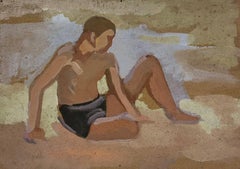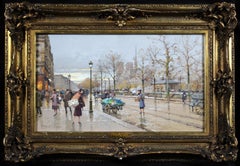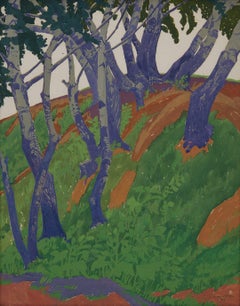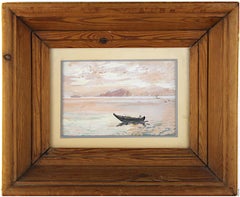Gouache Figurative Paintings
Mid-20th Century Impressionist Gouache Figurative Paintings
Gouache
1950s American Modern Gouache Figurative Paintings
Board, Gouache
1910s Impressionist Gouache Figurative Paintings
Paper, Gouache
1910s American Modern Gouache Figurative Paintings
Gouache
1930s Impressionist Gouache Figurative Paintings
Gouache, Laid Paper
Mid-20th Century Impressionist Gouache Figurative Paintings
Gouache
20th Century Outsider Art Gouache Figurative Paintings
Gouache
20th Century Outsider Art Gouache Figurative Paintings
Gouache
1940s American Modern Gouache Figurative Paintings
Watercolor, Gouache
20th Century Surrealist Gouache Figurative Paintings
Gouache, Board
Early 20th Century Impressionist Gouache Figurative Paintings
Board, Gouache
Mid-20th Century Impressionist Gouache Figurative Paintings
Gouache
Mid-20th Century Modern Gouache Figurative Paintings
Gouache
1940s Impressionist Gouache Figurative Paintings
Gouache, Laid Paper
20th Century Outsider Art Gouache Figurative Paintings
Gouache
20th Century Outsider Art Gouache Figurative Paintings
Gouache
20th Century Outsider Art Gouache Figurative Paintings
Gouache
20th Century Outsider Art Gouache Figurative Paintings
Gouache
20th Century Outsider Art Gouache Figurative Paintings
Gouache
1950s Abstract Gouache Figurative Paintings
Paper, Oil, Watercolor, Gouache
2010s Contemporary Gouache Figurative Paintings
Acrylic, Gouache, Pigment
1950s Gouache Figurative Paintings
Acrylic, Gouache
2010s Contemporary Gouache Figurative Paintings
Acrylic, Gouache, Pigment
Mid-20th Century Modern Gouache Figurative Paintings
Gouache
2010s Gouache Figurative Paintings
Wood, Paper, Gouache
2010s Gouache Figurative Paintings
Wood, Paper, Gouache
1890s Gouache Figurative Paintings
Gouache
1880s Impressionist Gouache Figurative Paintings
Gouache, Illustration Board
1990s Abstract Gouache Figurative Paintings
Gouache
Mid-20th Century Abstract Gouache Figurative Paintings
Gouache, Paper
1960s Gouache Figurative Paintings
Gouache
20th Century Post-Impressionist Gouache Figurative Paintings
Archival Paper, Gouache
Early 2000s Contemporary Gouache Figurative Paintings
Canvas, Gouache
Mid-20th Century Modern Gouache Figurative Paintings
Watercolor, Gouache
1940s Gouache Figurative Paintings
Gouache
Mid-20th Century Modern Gouache Figurative Paintings
Watercolor, Gouache
Mid-20th Century Post-Modern Gouache Figurative Paintings
Gouache
Mid-20th Century Modern Gouache Figurative Paintings
Gouache, Paper
1950s Abstract Expressionist Gouache Figurative Paintings
India Ink, Gouache
Mid-20th Century Expressionist Gouache Figurative Paintings
Gouache
1970s Contemporary Gouache Figurative Paintings
Charcoal, Gouache, Paper
Mid-20th Century Abstract Gouache Figurative Paintings
Paper, Pastel, Encaustic, Gouache
1990s Abstract Gouache Figurative Paintings
Gouache
21st Century and Contemporary Impressionist Gouache Figurative Paintings
Handmade Paper, Gouache
1980s Gouache Figurative Paintings
Gouache
1990s Abstract Gouache Figurative Paintings
Gouache
1960s Abstract Gouache Figurative Paintings
Paper, Pastel, Encaustic, Gouache
1990s Abstract Gouache Figurative Paintings
Gouache
Early 20th Century Modern Gouache Figurative Paintings
Paper, Charcoal, Pastel, Watercolor, Gouache
2010s Gouache Figurative Paintings
Wood, Paper, Gouache
1940s Gouache Figurative Paintings
Gouache
1970s Contemporary Gouache Figurative Paintings
Charcoal, Gouache, Paper
21st Century and Contemporary Impressionist Gouache Figurative Paintings
Handmade Paper, Gouache
1990s Abstract Gouache Figurative Paintings
Gouache
1990s Abstract Gouache Figurative Paintings
Gouache
Mid-20th Century Modern Gouache Figurative Paintings
Paper, Gouache
1990s Abstract Gouache Figurative Paintings
Gouache
21st Century and Contemporary Modern Gouache Figurative Paintings
Gouache





